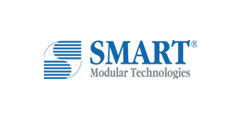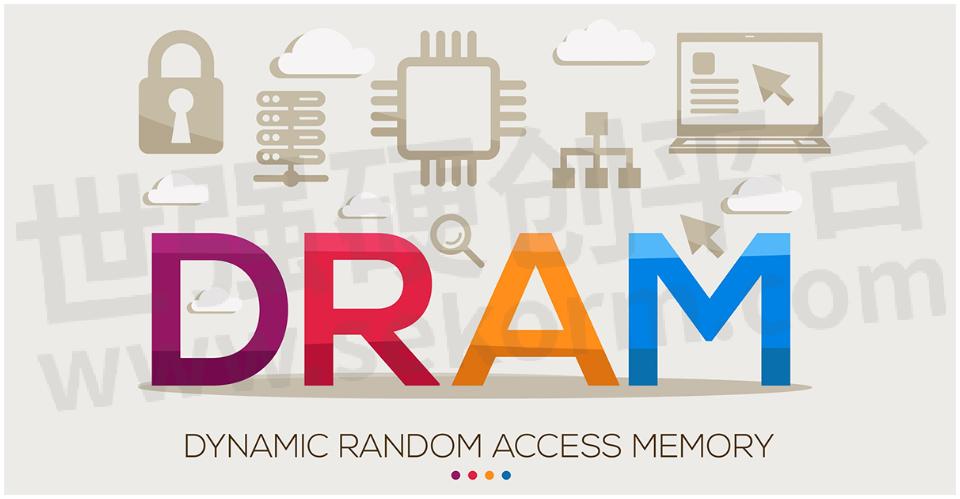DRAM: How to Pick the Right Embedded Memory?




In the rapidly evolving electronics landscape, choosing the appropriate Dynamic Random Access Memory (DRAM) is crucial for optimizing performance and meeting project requirements. Engineers and procurement specialists play a pivotal role in this process, ensuring that the selected DRAM aligns with technical specifications, budget constraints, and future scalability. In this blog post, SMARTsemi summarizes insights and strategies for navigating the complexities of DRAM selection depending on the application.

Selection Criteria
DRAM serves as the primary volatile memory in electronic equipment, providing high-speed data storage and access. Key considerations include speed, capacity, voltage requirements, and form factor compatibility with existing systems. Performance metrics such as bandwidth, latency, and refresh rates depend on the technical specifications required for the intended application. Factors like power consumption, temperature tolerance, and compatibility with other components are taken into consideration to ensure seamless integration and optimal performance.
Several types of DRAM are available, each offering unique advantages and trade-offs. Common variants include DDR (Double Data Rate) and LPDDR (Low Power DDR). DDR variants cater to general-purpose computing needs, while LPDDR focuses on power efficiency for mobile devices. From DDR2 to DDR5, capacity and speed increase with each generation of DDR. However, more capacity and higher speed are not always better depending on the application.
The temperature grade determines under what conditions the memory components are stable. For example, commercial grade and industrial grade DDR devices might have the same density, speed, and form factor but won’t operate equally reliably at high or low temperatures. Commercial grade DRAM is graded for 0℃ to 85℃ and industrial grade from -40℃ to +95℃. The Automotive (Wide) temperature grade is stable in an even wider range: from -40℃ to +105℃. The application's exact requirements and budget constraints determine the choice. Separate from temperature range grading, components for automotive applications can also be specifically tested for integration in various systems. SMART’s automotive devices meet the AEC Q-100 Class 2 specification for in-passenger cabin equipment.
Component Selection
Collaboration between engineers and procurement specialists is essential to streamline the DRAM procurement process. Procurement teams should leverage their industry expertise to source DRAM from reliable suppliers, like SMARTsemi, that offer competitive pricing and quality assurance. By prioritizing suppliers with a track record of delivering on time and providing excellent customer support, project risks decrease and smooth operations are ensured.
Keeping the Future in Mind
It is important to anticipate future needs and technological advancements when selecting DRAM components. In order to extend the lifespan of a product, it is best practice to opt for solutions that offer scalability and compatibility with evolving standards and source from a supplier who provides long-term component availability. Factors like backward compatibility, support for emerging technologies, and future-proofing strategies mitigate the risk of obsolescence and facilitate future upgrades.
Choosing the right DRAM memory requires a comprehensive understanding of technical requirements, careful evaluation of available options, and effective collaboration between engineers, procurement specialists, and suppliers. Understanding the needs in terms of performance metrics (bandwidth, latency), power consumption, and environmental conditions will help narrow down the options and ensure compatibility with existing hardware and software. By prioritizing performance, reliability, and scalability, organizations can make informed decisions that drive innovation and ensure success regardless of the application.
- |
- +1 赞 0
- 收藏
- 评论 0
本文由上山打老虎转载自SMART (smartsemi News),原文标题为:DRAM: How to Pick the Right Embedded Memory,本站所有转载文章系出于传递更多信息之目的,且明确注明来源,不希望被转载的媒体或个人可与我们联系,我们将立即进行删除处理。
相关推荐
Memory in the Brains and Brawn of a Modern, Smart Factory
In a modern, automated factory, real-time adaptive operations are enabled by seamless communication between the AI-powered industrial controllers and the autonomous machines on the shop floor—the brains and brawn of a smart factory.
How Memory Technologies Have Impacted the Industrial Robotics Industry and Automation
In this paper, from industrial robots to DDR DRAM technology innovation and iteration, in the rapid development of data today with the advancement of industry 4.0, the future of smart factories will become more intelligent, analyzed the development of storage, but also looked forward to the future development of storage products.
Memory Makes Medical Possible
From advanced, AI-powered surgical robots, immersive VR/AR gear, sophisticated diagnostics equipment like MRIs, CAT-scans, X-rays, and heart monitors to wearable health devices and communicators, it’s medical equipment that supports the hands, eyes, minds and passion of medical professionals. Nearly all medical equipment has memory, many with embedded components such as DDR SDRAMs, Flash eMMCs, and Flash SD Cards. These devices must operate reliably for extended periods of time and frequently have a long lifecycle.
2024年Q3-DRAM与SSDA市场态势剖析:AI驱动下的涨势与变数
AI的蓬勃发展持续推动半导体和IT产业的成长,尤其在存储领域,生成式AI应用助长了市场对高性能运算方面的需求。从数据中心的AI服务器到消费端的AI PC,内存运算和存储性能表现至关重要,成为提升AI应用落地的关键推手。
SMART CXL Memory Module, Which is Compatible with PCIe-Gen5 Speeds Running At 32GT/s
SMART develops CXL Type 3 (CXL.mem) memory products to address the industry’s need for more memory per processor core.
SMART提供多款DRAM内存产品,可用于IIoT,较现成的工业级DRAM成本更低
SMART的DRAM内存产品能够满足数据的指数增长以及相关的数据处理需求。智能工厂、自动化机械、智能建筑、自动化农业设备和互联交通应用都在产生大量数据,必须收集、处理、存储和分析这些数据以满足不断变化的需求。其产品非常适合为IIoT应用提供长期可靠的支持。
2024年Q1 DRAM与SSD市场趋势及展望:存储产业强劲反弹
回顾2023年,受到整年持续的通货膨胀及地缘政治紧绷情势的影响,全球经济大幅放缓。值得注意的是,存储产业预估将一甩近年来的低迷,呈现正面态势并强劲反弹,这股复苏力度归功于AI相关技术的持续进展,有助于扩大工业和消费电子领域对密集型内存应用的需求。迈入2024年,请参考存储市场主要应用的价格更新和市场前景。本文中SMART与您分享2024年Q1 DRAM与SSD市场趋势及展望:存储产业强劲反弹。
DuraMemory™ DDR5 Memory Modules
型号- SR2G7UD5285SBV,SR2G6UD5285-SB,SRI2G7SO5285-SB,SR4G7SO5285SB,SRZ4G8RD5445-SB,SR4G7UD5288MGV,SRI2G7UD5285SB,SRI4G6SO5285-SB,SR4G8RD5285SBV,SRI4G8RD5285-SB,SR2G6SO5285-SB,ST4G8RD5288-HA,SR8G8RD5448-MD,SR1G6SO5165-SB,SRI4G7SO5285SB,SR6G6SO5385SB,STHG8RD5645-HM,SR2G8RD5285-SB,SRI2G7UD5285-SB,SR1G6UD5165-SB,SR4G7UD5285SB,SRB8G8RD5445-SB,SR4G7SO5285-SB,SRI6G7UD5385MB,SR4G8RD5285MA,SR2G8RD5288-MD,SR2G7UD5285-SB,ST4G7SO5285SB,SRI4G7UD5285SBV,SR3G6SO5385SB,STZ8G8RD5445-HA,SR2G7SO5285SB,SR4G8RD5285HAV,SR8G8RD5445-SB,STZ8G8RD5445-MA,SR4G6SO5285SB,SRI4G7UD5285SB,SR4G7UD5288SBV,SRI8G8RD5445-SB,SR6G8RD5645-SB,ST4G8RD5445-MA,SR4G6SO5285-SB,SRZ2G8RD5285-SB,ST4G8RD5448-HA,ST3G8RD5385-HM,SRI2G7UD5285SBV,SR4G8RD5448-MD,SRI1G6UD5165-SB,ST6G8RD5645-HM,SRI2G6UD5285-SB,ST2G8RD5288-HA,ST2G8RD5285-MA,SRI2G6SO5285-SB,SR4G7UD5285-SB,SRI1G6SO5165-SB,ST8G8RD5445-HA,SRHG8RD5645-SB,SR6G7UD5385SBV,SR4G8RD5285SB,SRI2G7SO5285SB,SRI4G6UD5285-SB,SR4G7UD5285SBV,SRBG8RD544H-SB,SRB4G8RD5445-SB,SR4G8RD5285MAV,SR4G7UD5288MG,SR2G7UD5285SB,SR4G7UD5288MDV,STAG8RD544H-HA,SR4G8RD5445-SB,ST8G8RD5448-HA,SR4G8RD5285-SB,SR6G7UD5385MB,SRI4G7UD5285-SB,SR4G7UD5288-SD,SR2G6SO5285SB,SR2G7SO5285MA,SRAG8RD5846-SB,SRI2G8RD5285-SB,SRI4G8RD5445-SB,SR4G6UD5285-SB,SR2G7SO5285-SB,ST8G8RD5445-MA
全球第二大独立内存模组制造商世迈科技正式授权世强代理其DRAM、SSD等存储产品
7月,全球第二大独立内存模组制造商SMART(世迈科技 NASDAQ:SMOD)与世强硬创电商签署授权代理协议,授权其代理旗SSD、DRAM、DRAM DDR5等产品。
电子商城
现货市场
服务
深圳市启威测实验室,面向所有企业提供信号完整性测试服务,主要包括USB、HDMI 、DP、MIPI、PCIe 、SD/EMMC、DDR接口信号测试。测试手段有波形测试、眼图测试、抖动测试等。
提交需求>





































































































































































































登录 | 立即注册
提交评论